
-
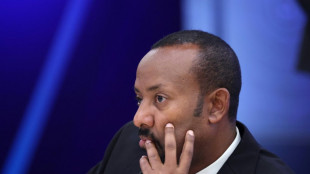 Ethiopia set to host UN's 2027 climate summit, 2026 undecided
Ethiopia set to host UN's 2027 climate summit, 2026 undecided
-
Close Zelensky ally accused of orchestrating major graft scheme
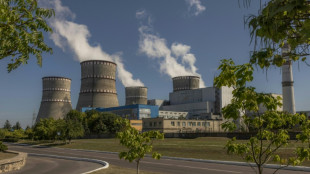
-
 'Trump is temporary': California governor Newsom seizes COP30 spotlight
'Trump is temporary': California governor Newsom seizes COP30 spotlight
-
US stocks end mostly higher despite drop in Nvidia

-
 Arrival of US aircraft carrier fuels Venezuelan fears of attack
Arrival of US aircraft carrier fuels Venezuelan fears of attack
-
Iraqi voters turn out in numbers as region watches on

-
 Pakistan upstage Sri Lanka in first ODI as Agha and Rauf shine
Pakistan upstage Sri Lanka in first ODI as Agha and Rauf shine
-
Macron warns any planned West Bank annexation a 'red line'
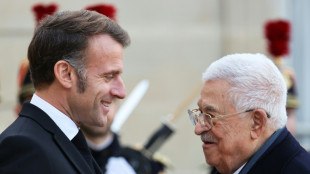
-
 BBC must fight, says outgoing chief as Trump threatens to sue
BBC must fight, says outgoing chief as Trump threatens to sue
-
UN aid chief hails talks with Sudan army leader

-
 Mellon Blue diamond sells for $25.6 million
Mellon Blue diamond sells for $25.6 million
-
Google unveils $6.4 bn investment in Germany
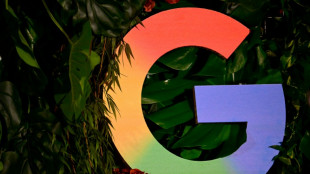
-
 US aircraft carrier in Latin America fuels Venezuelan fears of attack
US aircraft carrier in Latin America fuels Venezuelan fears of attack
-
For many Syrians, Sharaa's US visit marks new beginning
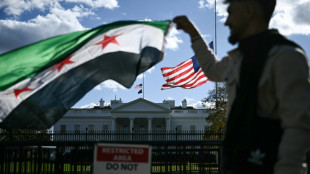
-
 Monumental art displayed in shade of Egypt's pyramids
Monumental art displayed in shade of Egypt's pyramids
-
Stocks mixed as tech titans struggle

-
 California governor Newsom slams Trump at COP30
California governor Newsom slams Trump at COP30
-
Alcaraz fights back to beat Fritz at ATP Finals

-
 Russia offers US nuclear talks in bid to ease tensions
Russia offers US nuclear talks in bid to ease tensions
-
Turkey seeks more than 2,000 years behind bars for Erdogan rival

-
 UK court jails Chinese bitcoin fraudster for over 11 years
UK court jails Chinese bitcoin fraudster for over 11 years
-
Fanfare as Guinea launches enormous Simandou iron ore mine
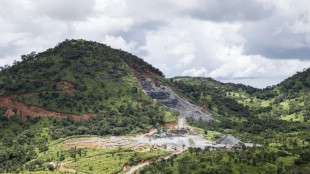
-
 Iraqis vote in general election at crucial regional moment
Iraqis vote in general election at crucial regional moment
-
Shock follows carnage after suicide bombing in Islamabad

-
 Ford returns to pull England strings against All Blacks
Ford returns to pull England strings against All Blacks
-
Stocks mixed as end to US shutdown appears closer
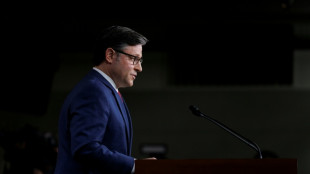
-
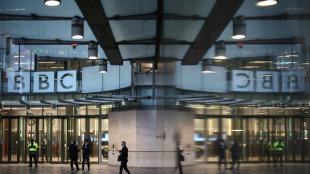 BBC must 'fight' for its journalism, outgoing chief says amid Trump lawsuit threat
BBC must 'fight' for its journalism, outgoing chief says amid Trump lawsuit threat
-
Atalanta turn to Palladino after Juric sacking
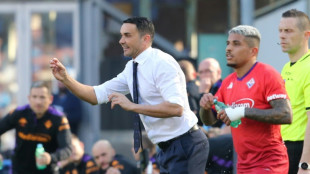
-
 'Sayyid says': Influential Shiite cleric's supporters boycott Iraq vote
'Sayyid says': Influential Shiite cleric's supporters boycott Iraq vote
-
'It's un-British': lawmakers raise concerns about aquarium penguins
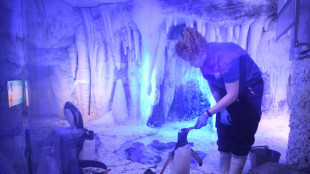
-
 Prosecutor files 142 charges against Istanbul mayor, a top Erdogan critic
Prosecutor files 142 charges against Istanbul mayor, a top Erdogan critic
-
Agha hundred lifts Pakistan to 299-5 in 1st Sri Lanka ODI

-
 German court rules against OpenAI in copyright case
German court rules against OpenAI in copyright case
-
Calls for 'mano dura' as crime-rattled Chile votes for president

-
 Pakistani Taliban claim deadly suicide attack in Islamabad
Pakistani Taliban claim deadly suicide attack in Islamabad
-
BBC grapples with response to Trump legal threat

-
 Cristiano Ronaldo says 2026 World Cup 'definitely' his last
Cristiano Ronaldo says 2026 World Cup 'definitely' his last
-
Trump says 'we've had a lot of problems' with France

-
 Stocks mostly rise as end to US shutdown appears closer
Stocks mostly rise as end to US shutdown appears closer
-
'Splinternets' threat to be avoided, says web address controller

-
 Yamal released from World Cup qualifiers by 'upset' Spanish federation
Yamal released from World Cup qualifiers by 'upset' Spanish federation
-
China's 'Singles Day' shopping fest loses its shine for weary consumers

-
 Suicide bombing in Islamabad kills 12, wounds 27
Suicide bombing in Islamabad kills 12, wounds 27
-
Philippines digs out from Typhoon Fung-wong as death toll climbs

-
 Iraqis vote in general election at a crucial regional moment
Iraqis vote in general election at a crucial regional moment
-
Asian stocks wobble as US shutdown rally loses steam

-
 UK unemployment jumps to 5% before key govt budget
UK unemployment jumps to 5% before key govt budget
-
Japanese 'Ran' actor Tatsuya Nakadai dies at 92

-
 AI stock boom delivers bumper quarter for Japan's SoftBank
AI stock boom delivers bumper quarter for Japan's SoftBank
-
Asian stocks struggle as US shutdown rally loses steam


Japan show provides glimpse of robots as future of rescue efforts
With a drone camera, a survivor is spotted in the rubble. A robot on tracks brings him water while rescuers in exoskeletons clear an escape route for an autonomous stretcher to take her to safety.
This is the futuristic vision on display at the Japan Mobility Show, aiming to exhibit how technology can help and sometimes replace humans in a country short of workers and no stranger to disasters.
But so as not to alarm people, the imaginary tragedy is unleashed by Godzilla, who has unleashed catastrophe in Japanese disaster films since the 1950s.
In Japan nearly 30 percent of the country's population is aged 65 and over.
"Because of the decline of the population there are fewer and fewer people available for dangerous tasks," said Tomoyuki Izu, founder of Attraclab, a local start-up specialising in autonomous mobility.
"My idea is to help people such as firefighters with my machines," Izu, 61, told AFP.
It was Attraclab that co-developed the small delivery robot squeezing through the cardboard rubble at the Japan Mobility Show and designed the remote-control stretcher on wheels or tracks.
For now the Japanese government favours "traditional equipment" for relief efforts, he said at the event, which opens to the public this weekend.
But Izu believes there will be a market for more advanced technology in the future.
"There's a lots of anime with humanoid robots in Japan, and therefore people love them. But these kinds of autonomous vehicles are still very strange for them," he said.
Since 2016, Japan's Kawasaki Heavy Industries (KHI) has been developing Kaleido, a robust humanoid robot capable of delicately lifting and moving injured people.
- 'Shortage of labour' -
"In the future this robot will be able to save people, or go to dangerous zones, like fires," said Itsuki Goda from the robotics division of KHI.
He conceded, though, that the machine needs more development on its scanning capabilities to get through difficult terrain.
"We need more years of development if we want to use it in real situations, where conditions are always different," he told AFP.
Kaleido's current load capacity of 60 kilograms (132 pounds) will be increased very soon with a new prototype, promised Goda.
Price is also an issue.
Right now this robot is "maybe 10 times more expensive than a human, but if we produce 10,000 of them per year, the price will go down rapidly", Goda added.
Since the Fukushima nuclear disaster in 2011, another niche segment has exploded: robots to clear up disaster areas that are difficult or dangerous to access.
Engineering firm Sugino Machine presented a powerful but small robotic arm rigged on crawlers that can work in areas that emergency workers cannot go.
The machine was built in 2018 for a nationally run atomic research agency, as Japan continues the work to decommission the Fukushima Daiichi nuclear plant.
"This can be used for initial damage assessment or to remove debris or to remove heavy items that people cannot lift," Akira Inujima from Sugino Machine told AFP.
Various tools can be attached to its arm, such as image, temperature or radioactivity sensors, or a high-pressure water lance.
"We have a shortage of labour. It is difficult to go all robot. But we can offer solutions to help people's work," he said.
"After Fukushima, we have been able to continue technological development because there has been project after project (heavily supported by the government), like removing debris, that needs our work," Inujima said.
"It's important to continue this work and not make this fade away."
C.Garcia--AMWN

